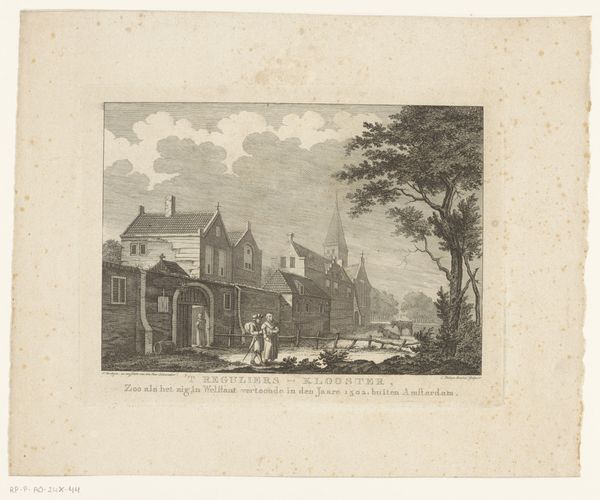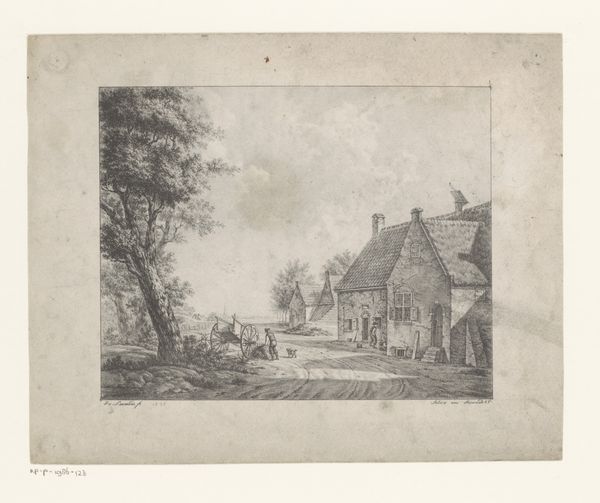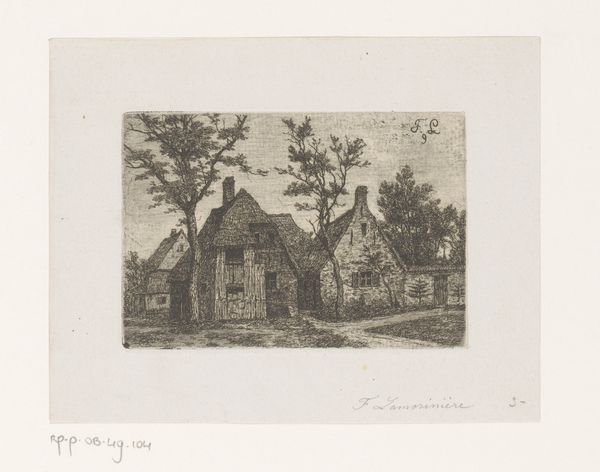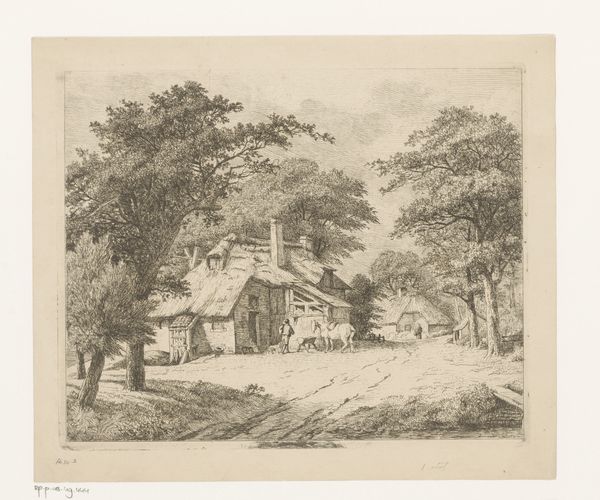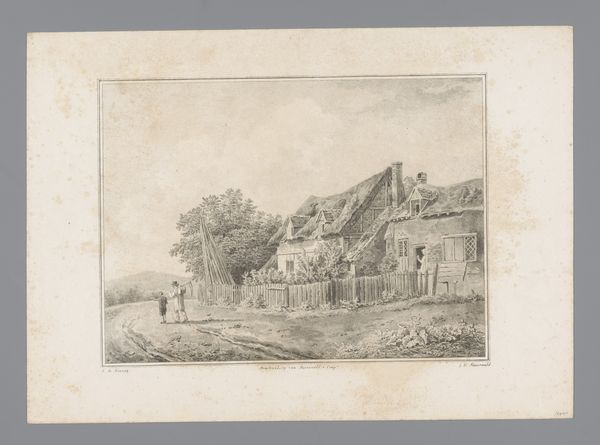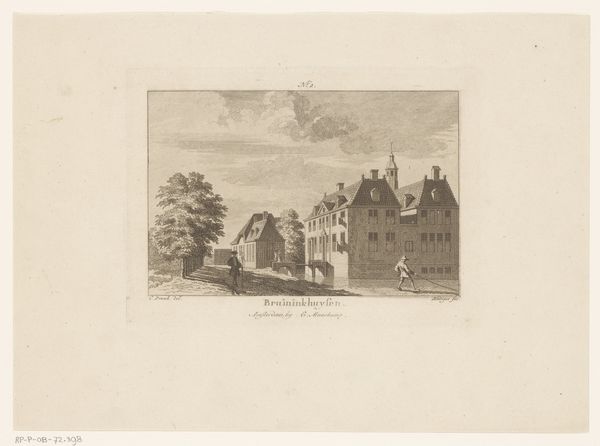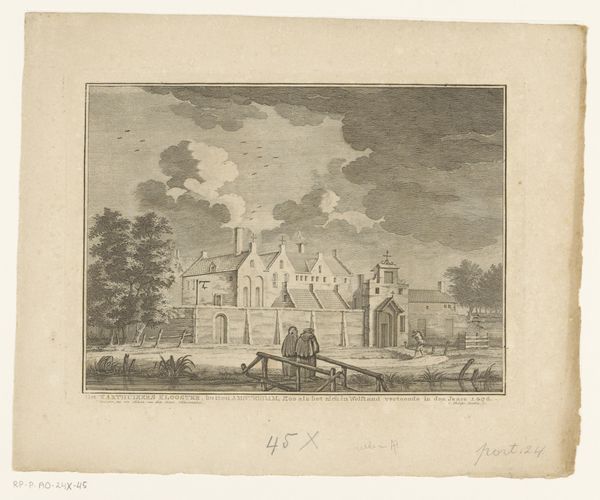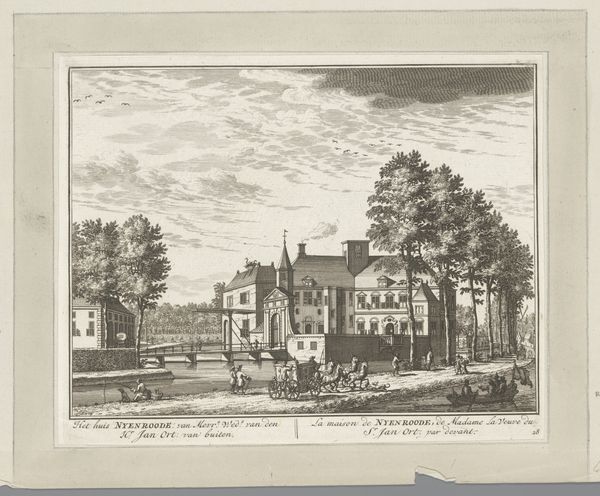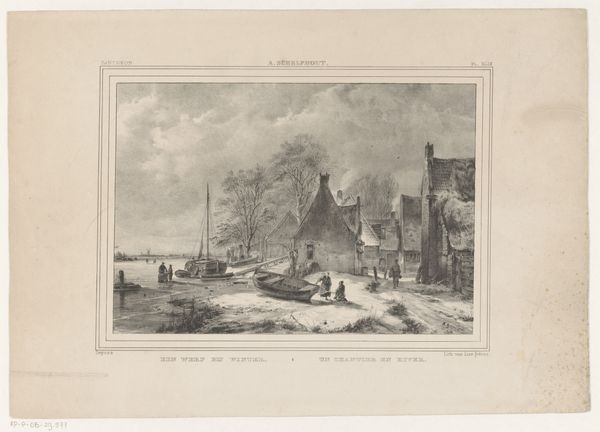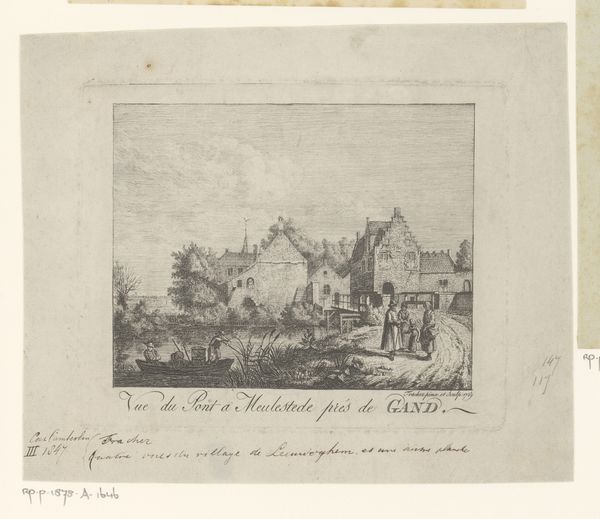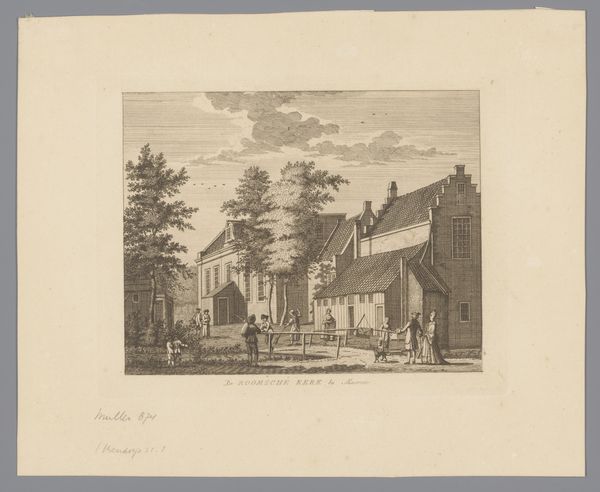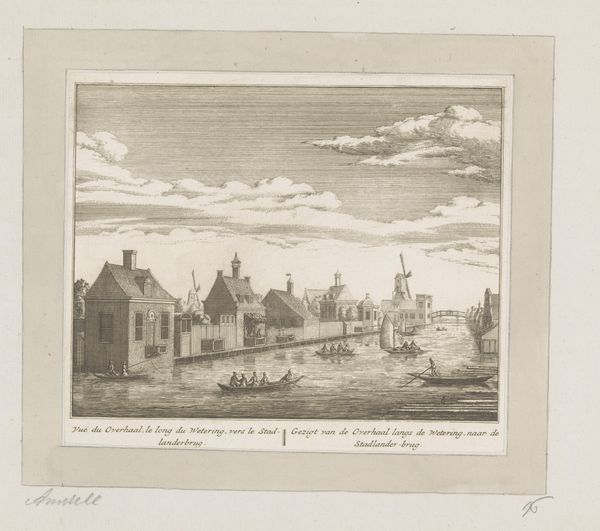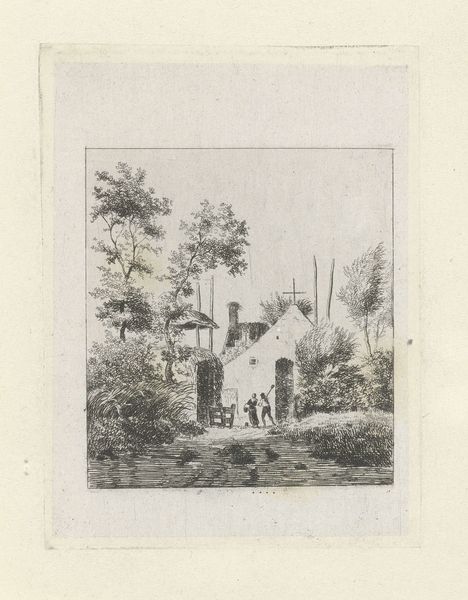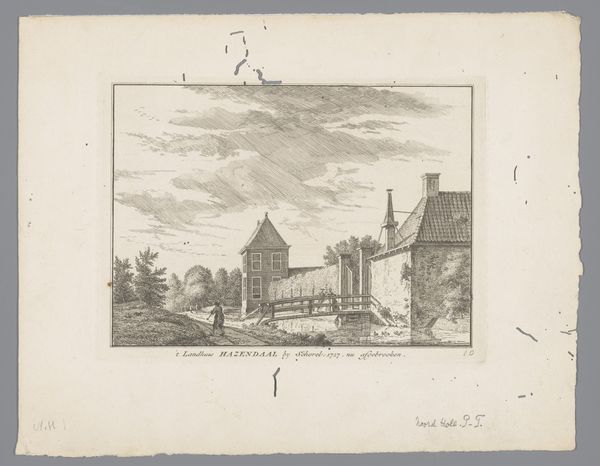
print, etching
# print
#
etching
#
landscape
#
etching
#
romanticism
#
cityscape
Dimensions: height 140 mm, width 174 mm
Copyright: Rijks Museum: Open Domain
Curator: Pierre François De Noter's "Gezicht op het Prinsenhof te Gent," dating back to 1831, is a rather compelling etching that offers a glimpse into a specific moment in the urban landscape of Ghent. What's your initial reaction? Editor: There's a striking serenity to it. The careful lines used to depict the architecture and even the movement of water suggests tranquility. It seems almost like a peaceful memory of a place and time. Curator: Indeed. The etching technique lends itself particularly well to this affect. De Noter's attention to line weight and texture creates a beautiful composition. Look at how the precise horizontal lines illustrating the canal contrast against the busy organic textures of the vegetation. Editor: Beyond just craft, consider the symbolism! Water often stands for change, transition, and perhaps even memory. Placed against a backdrop of stately architecture, it represents both the solidity of institutions and inevitable cultural and social evolutions. This romantic sentiment reflects an almost wistful eye towards history. Curator: I agree there is an evocative element here, but I also appreciate the structural logic De Noter employs. The building’s positioning relative to the water, the way the light falls. He's not simply depicting a scene; he's creating a complex formal arrangement. Editor: Do you see that tiny boat, though? It seems to call to mind the river Styx with the implication of transitioning to another life, and the walls of the castle behind it seem very forbidding from a distance. Curator: Interesting, but the presence of those figures could also be simply an aesthetic one—scale. The human form grounds the more immense architectural structure and brings it to a more relative understanding in relation to the audience’s perspective. Editor: Regardless, the artwork really captures a moment where history, nature, and humanity meet. It leaves one thinking about our ever-changing relationship with places and what memories persist within us as a society. Curator: I concur. Whether reading into the symbology of the figures and bodies of water, or exploring the arrangement of horizontal and organic elements in the scene, De Noter presents an intriguing intersection of observation, and formal precision.
Comments
No comments
Be the first to comment and join the conversation on the ultimate creative platform.
